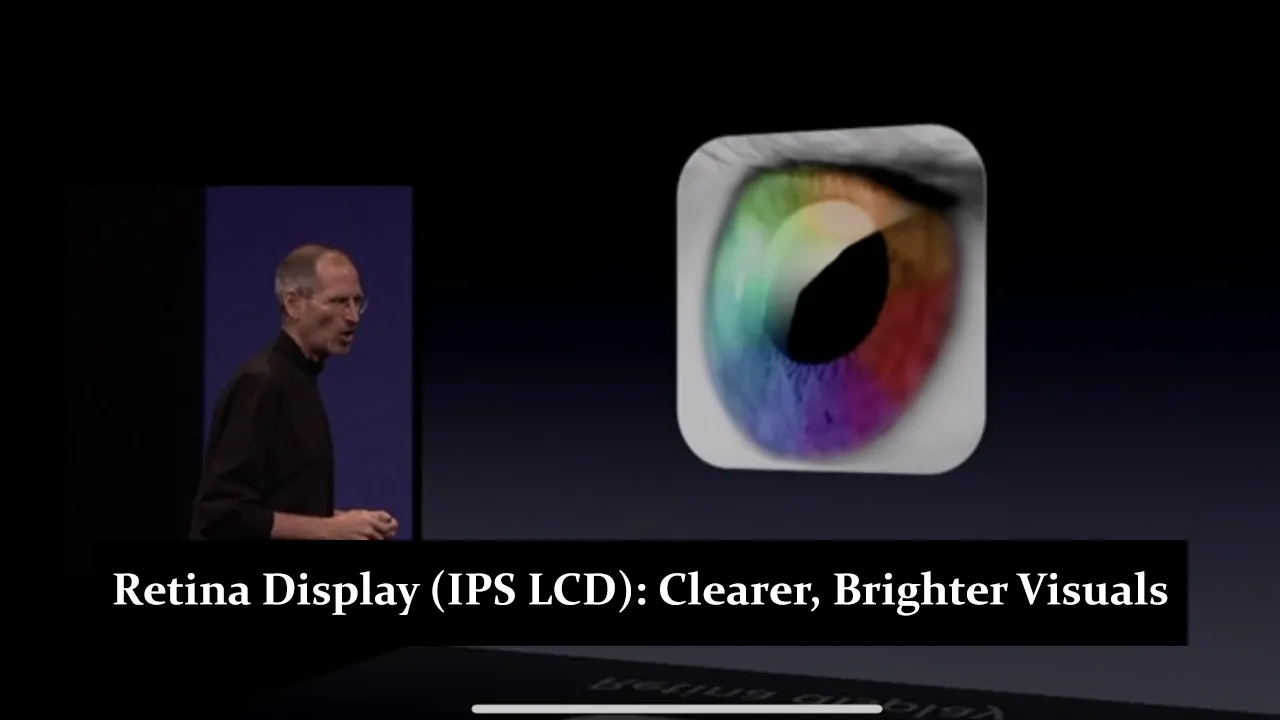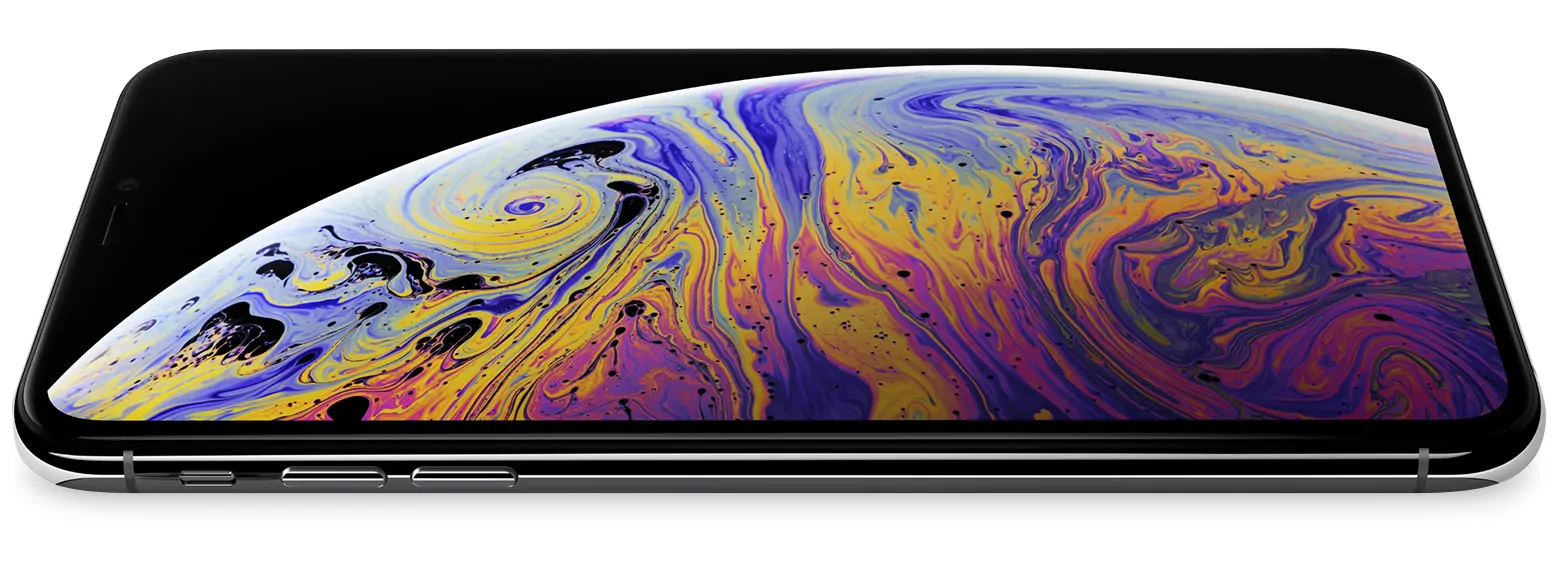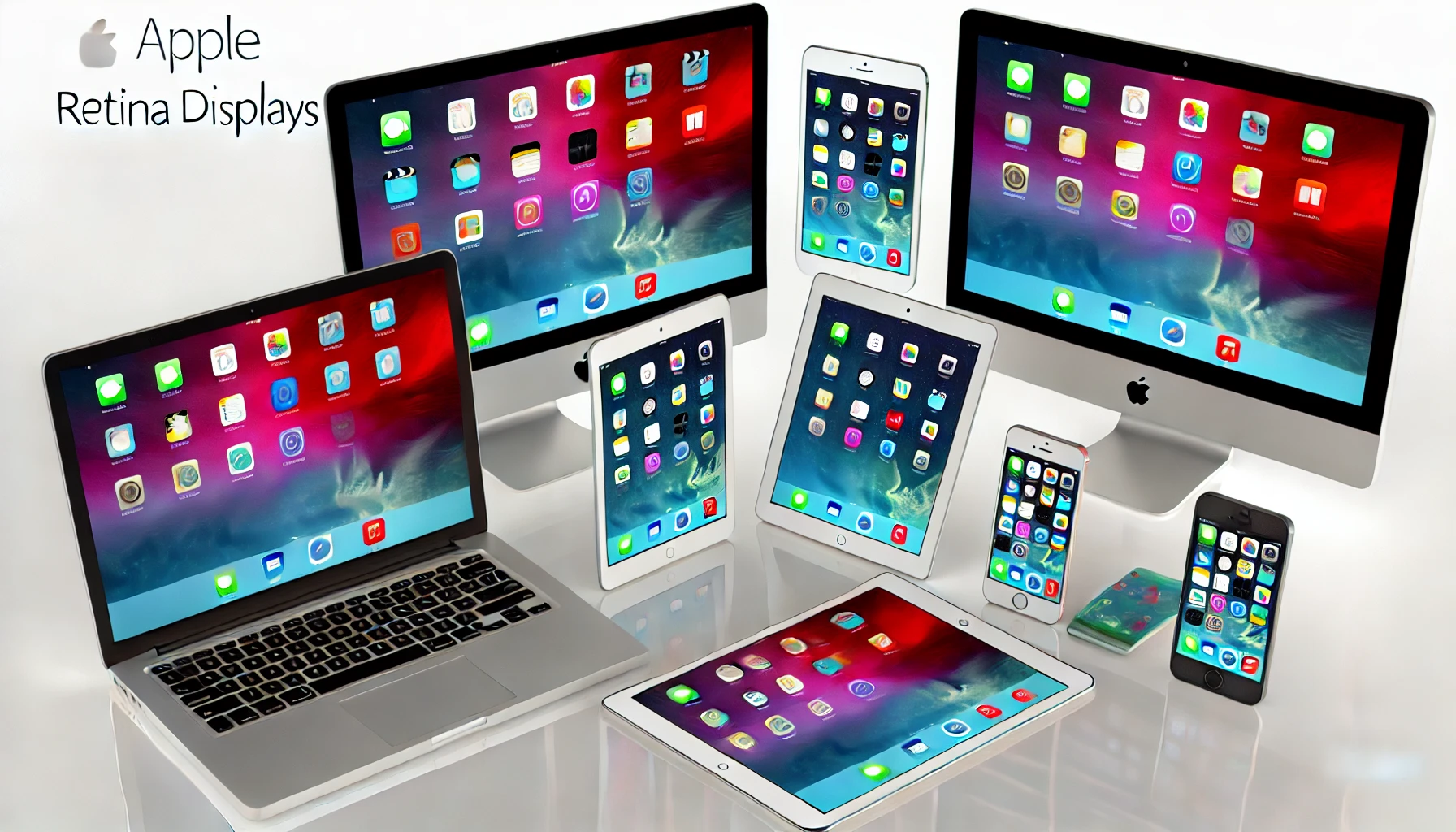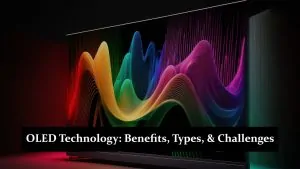Display technology has come a long way, offering clearer, sharper images with each advancement. One such innovation is the Retina Display, introduced by Apple. A Retina Display refers to screens with such high pixel density that the human eye cannot distinguish individual pixels from a normal viewing distance. Retina Displays’ ability to provide ultra-clear images and vibrant colours sets them apart from other screens, making everything look lifelike. IPS (In-Plane Switching) LCD technology in Retina Displays enhances this experience by offering wider viewing angles and better colour accuracy, giving users an exceptional visual experience.
What is a Retina Display?
A Retina Display is a screen technology developed by Apple that offers a very high resolution and pixel density, making the display incredibly sharp and clear. “Retina” refers to the idea that the pixels are so densely packed that the human eye cannot see individual pixels from a typical viewing distance. This results in smooth text, crisp images, and vibrant colours. Apple first introduced the Retina Display with the iPhone 4 in 2010, setting a new standard for display quality. Since then, many Apple devices, including iPhones, iPads, MacBooks, and iMacs, have been equipped with Retina Displays, providing users with an outstanding visual experience across their product line.
IPS LCD Technology
IPS (In-Plane Switching) LCD technology is a type of display technology that improves upon traditional LCD screens by offering better colour accuracy and wider viewing angles. Unlike standard LCDs, which can lose colour and contrast when viewed from the side, IPS panels maintain consistent colours and sharpness even at wider angles. This makes IPS ideal for activities like video watching or working with images where accurate colours and clear visuals are important. In Retina Displays, IPS technology plays a crucial role by enhancing the overall visual experience, ensuring that images look vibrant and sharp from any angle, and providing better colour reproduction, which makes everything on the screen look more lifelike.
Key Features of Retina Display (IPS LCD)
High Pixel Density and Clarity
Retina Displays are known for their high pixel density, which makes text, images, and videos incredibly sharp. The individual pixels are packed so closely together that they become invisible to the human eye, resulting in a smoother and clearer display.
Wide Viewing Angles Due to IPS Technology
Thanks to IPS technology, Retina Displays offer wide viewing angles without losing colour or contrast. The display remains crisp and vibrant whether looking at the screen from the side or straight on.
Enhanced Color Accuracy and Brightness
Retina Displays provide excellent colour accuracy, ensuring that images appear as close to real life as possible. They also offer better brightness levels, making content easy to view in different lighting conditions.
Low Power Consumption Benefits
Despite their high-quality visuals, Retina Displays are energy-efficient. Combining IPS LCD technology and optimised power usage helps extend battery life, making them perfect for mobile devices like smartphones and laptops.
Impact of Retina Display on User Experience
Retina Displays significantly enhance the user experience by offering sharper text, making reading more comfortable and enjoyable, especially for long periods. The improved video and image quality ensures that content looks vibrant and lifelike, which is ideal for watching videos or viewing photos. The high pixel density helps reduce eye strain during prolonged screen usage, as the clearer visuals require less effort to focus on. This display technology is also highly valued in professional settings like graphic design and video editing, where accuracy, clarity, and colour reproduction are critical for delivering high-quality work.
Retina Display in Various Devices
- iPhones: Apple introduced the Retina Display with the iPhone 4, which continues to be used in the latest models, enhancing clarity and sharpness for users.
- iPads: iPads, starting with the third-generation model, have featured Retina Displays, offering a better visual experience for reading, gaming, and multimedia.
- MacBooks: Retina Displays on MacBook Air and MacBook Pro models provide crisp text and stunning visuals, especially useful for creative professionals.
- iMacs: iMacs with Retina Displays, particularly the 4K and 5K models, offer ultra-high resolution for tasks like video editing, design work, and general use, making everything appear sharper and more vibrant.
Over the years, Retina technology has seen continuous improvements in resolution, colour accuracy, and power efficiency, maintaining its place as one of the leading display technologies in the market.
Challenges and Limitations
- Higher Manufacturing Costs: Due to their advanced technology and high pixel density, retina displays are more expensive to produce, which can increase the overall cost of devices.
- Retina Display vs Other Technologies: While Retina Displays offer excellent clarity and colour accuracy, they face competition from AMOLED and Super Retina displays, which provide deeper blacks, more vibrant colours, and often better contrast.
- Battery Life Limitations: Compared to OLED technology, Retina Displays can consume more power, which may result in slightly shorter battery life, especially in devices with larger screens.
Comparison With Other Displays
| Feature | Retina Display (IPS LCD) | AMOLED | OLED |
| Pixel Density | High, but varies across devices | High, with deeper individual pixel control | Very high, especially in newer models |
| Colour Accuracy | Excellent colour accuracy | More vibrant colours, sometimes oversaturated | Excellent, with deep blacks and accurate colours |
| Viewing Angles | Wide, thanks to IPS technology | Wide, but may suffer in extreme angles | Wide, with minimal distortion |
| Brightness | High brightness, suitable for outdoor use | Lower brightness, but sufficient for most uses | High brightness, great for all lighting conditions |
| Black Levels | Good, but not true black due to backlighting | True blacks, no backlight | True blacks, thanks to OLED technology |
| Contrast Ratio | Lower compared to OLED technologies | Infinite contrast (perfect blacks) | Infinite contrast, with more control over brightness |
| Power Consumption | More power-hungry due to backlighting | Power-efficient, especially with dark colours | Power-efficient with dark content but higher with bright colors |
| Durability | IPS panels are generally more durable | Prone to burn-in issues over time | Improved durability, but can still experience burn-in |
| Cost | Typically lower than OLED | More expensive to manufacture | Expensive due to OLED technology |
Conclusion
Retina Displays (IPS LCD) offer a remarkable balance of high pixel density, excellent colour accuracy, and wide viewing angles, making them ideal for delivering sharp, vibrant visuals across various devices. While facing competition from technologies like AMOLED and OLED, Retina Displays still hold their own by providing consistent performance without issues like screen burn-in. This technology remains important in today’s devices, especially for users prioritising clarity and colour precision. As Apple continues to innovate, Retina Displays set a high standard for quality, enhancing the user experience and maintaining its place as a leader in display technology.






